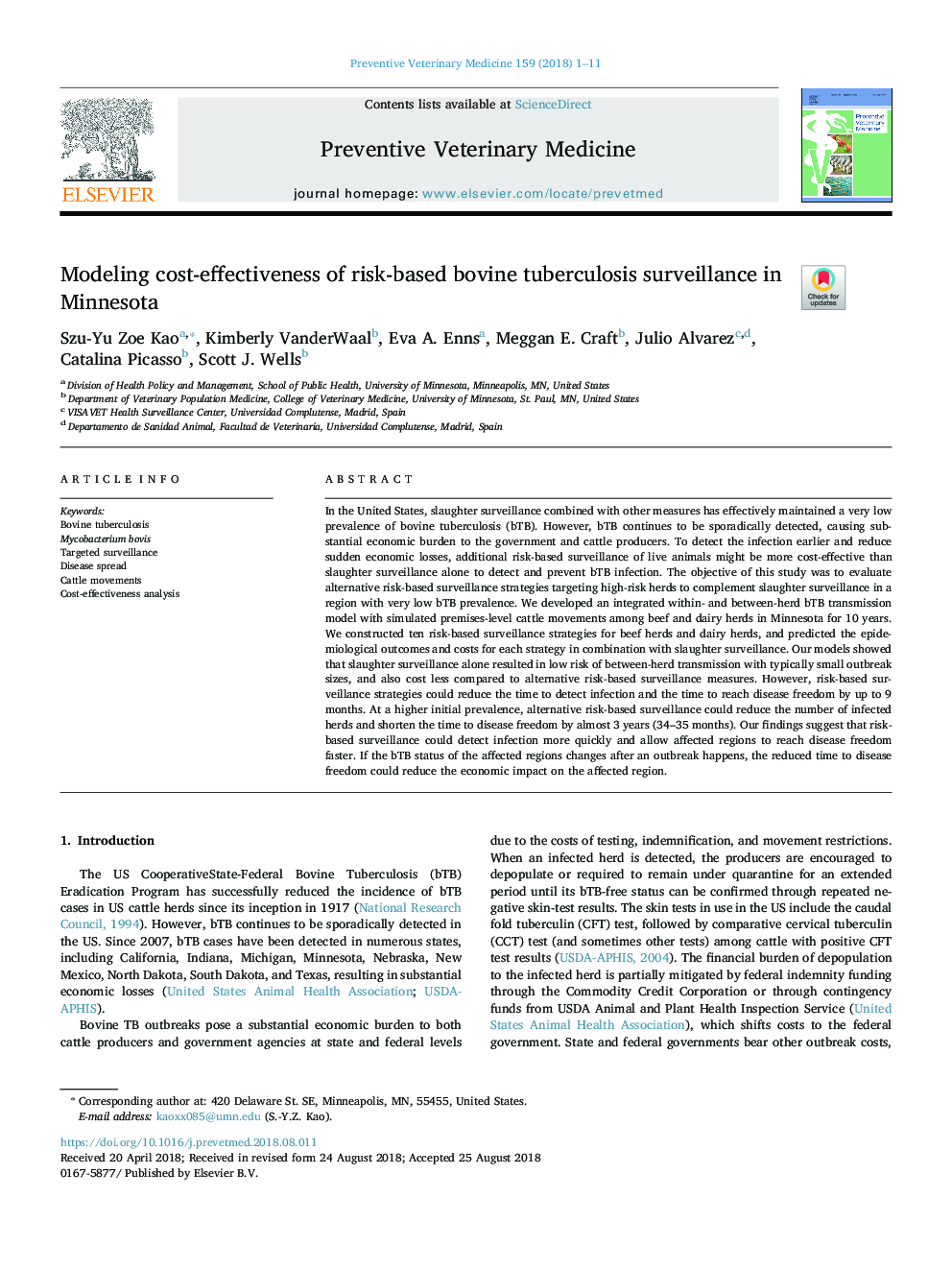| کد مقاله | کد نشریه | سال انتشار | مقاله انگلیسی | نسخه تمام متن |
|---|---|---|---|---|
| 8962309 | 1646561 | 2018 | 11 صفحه PDF | دانلود رایگان |
عنوان انگلیسی مقاله ISI
Modeling cost-effectiveness of risk-based bovine tuberculosis surveillance in Minnesota
ترجمه فارسی عنوان
مدل سازی هزینه-اثربخشی نظارت بر ریسک مبتنی بر ریزش مو در مینه سوتا
دانلود مقاله + سفارش ترجمه
دانلود مقاله ISI انگلیسی
رایگان برای ایرانیان
کلمات کلیدی
موضوعات مرتبط
علوم زیستی و بیوفناوری
علوم کشاورزی و بیولوژیک
علوم دامی و جانورشناسی
چکیده انگلیسی
In the United States, slaughter surveillance combined with other measures has effectively maintained a very low prevalence of bovine tuberculosis (bTB). However, bTB continues to be sporadically detected, causing substantial economic burden to the government and cattle producers. To detect the infection earlier and reduce sudden economic losses, additional risk-based surveillance of live animals might be more cost-effective than slaughter surveillance alone to detect and prevent bTB infection. The objective of this study was to evaluate alternative risk-based surveillance strategies targeting high-risk herds to complement slaughter surveillance in a region with very low bTB prevalence. We developed an integrated within- and between-herd bTB transmission model with simulated premises-level cattle movements among beef and dairy herds in Minnesota for 10 years. We constructed ten risk-based surveillance strategies for beef herds and dairy herds, and predicted the epidemiological outcomes and costs for each strategy in combination with slaughter surveillance. Our models showed that slaughter surveillance alone resulted in low risk of between-herd transmission with typically small outbreak sizes, and also cost less compared to alternative risk-based surveillance measures. However, risk-based surveillance strategies could reduce the time to detect infection and the time to reach disease freedom by up to 9 months. At a higher initial prevalence, alternative risk-based surveillance could reduce the number of infected herds and shorten the time to disease freedom by almost 3 years (34-35 months). Our findings suggest that risk-based surveillance could detect infection more quickly and allow affected regions to reach disease freedom faster. If the bTB status of the affected regions changes after an outbreak happens, the reduced time to disease freedom could reduce the economic impact on the affected region.
ناشر
Database: Elsevier - ScienceDirect (ساینس دایرکت)
Journal: Preventive Veterinary Medicine - Volume 159, 1 November 2018, Pages 1-11
Journal: Preventive Veterinary Medicine - Volume 159, 1 November 2018, Pages 1-11
نویسندگان
Szu-Yu Zoe Kao, Kimberly VanderWaal, Eva A. Enns, Meggan E. Craft, Julio Alvarez, Catalina Picasso, Scott J. Wells,
